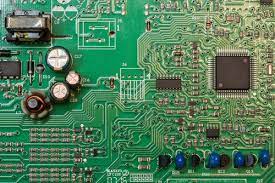Single-Sided Printed Circuit Board Assembly Oem Pcb & Pcba
Name: Single-Sided Printed Circuit Board Assembly Oem Pcb & Pcba
Origin: China
Certified: UL, CE, RoHS
Surface Finishing: HASL /Lead free
Application: pcba service
Base Material: RF4
Board Thickness: customized
What Is the Assembly of Single-Sided Printed Circuit Boards?
Assembling a (PCB) with circuitry on only one side is known as single-sided printed circuit board assembly. Integrated circuits, connections, resistors, capacitors, and other electronic components are installed on one side of a single-sided printed circuit board (PCB), while the other side is left empty.
- The most straightforward and fundamental kind of PCBs are single-sided PCBs. A single layer of conductive material, often copper, is laminated over a non-conductive substrate, such fiberglass or epoxy, to create these devices. To produce the necessary circuitry, which includes traces and pads for component attachment, the conductive layer is etched.
- The electronic parts are assembled by soldering them to the single-sided PCB’s appropriate pads. The electrical connections between the components and the conductive traces on the PCB are made possible by the solder joints. THT, in which component leads travel through holes in the PCB and are soldered on the further side, or (SMT), in which elements are directly joined onto the surface of the PCB, are two methods for mounting the components on the PCB.
Electronic assembly using single-sided printed circuit boards:
Single-sided printed circuit boards (PCBs) are a subset of PCBs that have all of their components and traces arranged on a single layer, with circuitry located on only one side of the board. For many different applications, they are often utilized in electronic construction. Single-Sided Printed Circuit Board Assembly are often more affordable than multi-layer PCBs in terms of cost. Lower production costs are attained through their simpler designs, fewer manufacturing procedures, and less material requirements.
-
Simple layout:
Compared to multi-layer boards, single-sided PCBs feature a simpler layout. The design process is simplified when there is just one layer for components and traces, which facilitates the creation of the PCB layout quickly and easily.
-
Low-density applications and prototype:
Single-sided PCBs are frequently utilized in electronic prototyping and low-density applications. They work well with circuits that have fewer parts and easier interconnections. Consumer electronics, games, simple control systems, and educational endeavors are a few examples of applications.
-
Limited routing options:
Single-sided PCBs only have one layer for traces, which limits the routing possibilities available. There are no internal layers that can be used for routing, and the traces can only run on one side. Due to this restriction, routing pathways may become longer and more complicated, which may compromise the integrity of the signal and increase the likelihood of noise interference.
-
Use of jumper wires:
Jumper wires are employed when it is necessary to link components on various areas of the board or to cross traces. These lines provide the required electrical connections, but they increase the assembly’s overall complexity and may not be as dependable as traces on the PCB.
The best option for Single-Sided Printed Circuit Board Assembly is LEIYAO:
Your demands for electronic assembly may be met effectively and affordably with the help of our single-sided PCB assembly service. We provide dependable assembly of single-sided printed circuit boards (PCBs) with accuracy and quality thanks to our cutting-edge machinery and knowledgeable personnel. We fully comprehend the needs and business practices of our international clients. As a result, we created our own ideal system for company growth, engineering design, creating artwork, production, and quality control.






